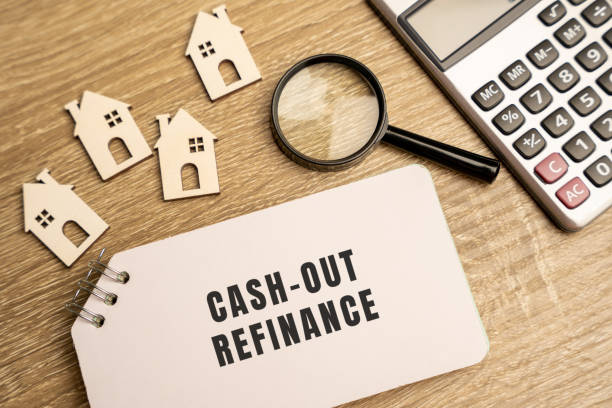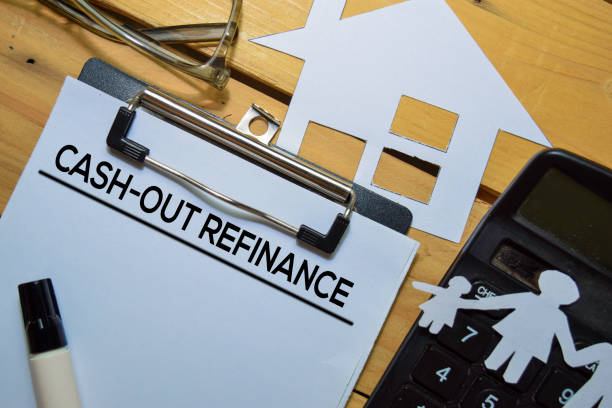Cash-Out Refinance – Cash-out refinancing is a popular way to access the equity in your home and use it for various purposes, such as home improvement, debt consolidation, or education. But what are the terms of a cash-out refinance, and how can you make the most of them? In this article, we will explain what cash-out refinancing is, how it works, what the requirements are, and what the pros and cons are. We will also give you some tips on how to compare different cash-out refinance offers and choose the best one for your situation.
READ ALSO
- How to Get Pre-approved for a Mortgage: A Complete Guide
- Rollover IRA: How to Roll Over Your 401 (k) and Save on Taxes
- Accounting Payroll Software for Small Business – Best in 2023
- Florida Car Lease Insurance Requirements: What You Need to Know
- Swiftkash loan app review: Get instant online loan in Nigeria
- HOW PROFITABLE IS COCOA FARMING IN NIGERIA
What Is Cash-Out Refinancing?
Cash-out refinancing is a type of mortgage refinancing that allows you to replace your existing mortgage with a new one that is larger than the amount you owe. The difference between the two loans is paid to you in cash, which you can use for any purpose you want. For example, if your home is worth $300,000 and you owe $100,000 on your mortgage, you can do a cash-out refinance for $200,000 and receive $100,000 in cash.
How Does Cash-Out Refinancing Work?
To do a cash-out refinance, you need to apply for a new mortgage with a lender that offers this option. The lender will assess your home value, your credit score, your income, your debt-to-income ratio, and other factors to determine how much you can borrow and at what interest rate. The lender will also charge you closing costs and fees for the new loan, which may be higher than for a regular refinance.
Once you are approved for the new loan, you will use it to pay off your existing mortgage and receive the remaining amount in cash. You will then have a new monthly payment based on the new loan amount, interest rate, and term. Depending on the terms of your new loan, your monthly payment may be higher or lower than before.
What Are the Requirements for Cash-Out Refinancing?
To qualify for cash-out refinancing, you need to meet certain requirements set by the lender and by the type of loan you have. Some of the common requirements are:
- You need to have enough equity in your home. Most lenders will let you borrow up to 80% of your home’s value, but some may go higher or lower depending on your credit profile and other factors.
- You need to have a good credit score. The minimum credit score required for cash-out refinancing varies by lender and by loan type, but generally, you need a score of at least 620.
- You need to have a stable income and a low debt-to-income ratio. Your income should be sufficient to cover your new monthly payment and your other debts. Your debt-to-income ratio should be below 43%, but some lenders may accept higher ratios depending on your situation.
- You need to have enough cash reserves. Some lenders may require you to have a certain amount of money in your bank account after closing to cover several months of mortgage payments and other expenses.
What Are the Pros and Cons of Cash-Out Refinancing?
Cash-out refinancing has some advantages and disadvantages that you should consider before deciding to do it. Here are some of them:
Pros
- You can access a large amount of cash at a lower interest rate than other types of loans or credit cards.
- You can use the cash for any purpose you want, such as home improvement, debt consolidation, education, or investment.
- You can potentially lower your interest rate or change your loan term if you refinance at a favorable time.
- You can deduct the interest paid on the new loan from your taxes if you use the cash for home improvement or other qualified purposes.
Cons
- You will reduce your home equity and increase your loan-to-value ratio, which may affect your ability to sell or refinance your home in the future.
- You will pay more interest over the life of the loan if you increase your loan amount or extend your loan term.
- You will pay closing costs and fees for the new loan, which may offset some of the savings from refinancing.
- You may face tax consequences if you use the cash for non-qualified purposes or if you sell your home within three years of refinancing.
How to Compare Cash-Out Refinance Offers
If you decide to do a cash-out refinance, you should shop around and compare different offers from different lenders. Here are some tips on how to do that:
- Compare the interest rates and APRs (annual percentage rates) of different loans. The APR includes the interest rate and other fees associated with the loan. Look for the lowest APR that meets your needs.
- Compare the loan terms and monthly payments of different loans. Consider how long you plan to stay in your home and how much you can afford to pay each month. Choose a loan term that suits your goals and budget.
- Compare the closing costs and fees of different loans. Closing costs and fees may include appraisal fees, origination fees, title fees, points, and other charges. Ask for a loan estimate from each lender that breaks down all the costs and fees associated with the loan. Look for the lowest total cost that meets your needs.
- Compare the cash-out amount and the loan-to-value ratio of different loans. The cash-out amount is the difference between the new loan amount and the existing loan balance. The loan-to-value ratio is the percentage of your home’s value that you owe on your mortgage. Look for the highest cash-out amount and the lowest loan-to-value ratio that meets your needs.
How to Use Cash-Out Refinance for Debt Consolidation
One of the common reasons why homeowners do a cash-out refinance is to pay off high-interest debts, such as credit cards, personal loans, or car loans. By using the cash from your home equity, you can potentially save money on interest and simplify your monthly payments. However, there are also some risks and drawbacks to consider, such as extending your debt repayment period, losing your home equity, and paying more fees and closing costs. In this section, we will explain how to use cash-out refinance for debt consolidation, what the benefits and drawbacks are, and what alternatives you may have.
How to Use Cash-Out Refinance for Home Improvement
Another popular way to use cash-out refinance is to fund home improvement projects that can increase the value, comfort, or functionality of your home. Whether you want to remodel your kitchen, add a new bathroom, or install solar panels, you can use the cash from your home equity to cover the costs. However, not all home improvement projects are worth the investment, and some may not increase your home value as much as you expect. In this section, we will explain how to use cash-out refinance for home improvement, what types of projects are worth doing, and what tax benefits you may qualify for.
How to Use Cash-Out Refinance for Education
Another possible way to use cash-out refinance is to pay for education expenses, such as tuition, fees, books, or living costs. Whether you want to pursue higher education yourself or help your children or grandchildren with their college costs, you can use the cash from your home equity to finance your education goals. However, there are also some disadvantages and risks to consider, such as losing your tax deductions, increasing your loan balance, and putting your home at risk of foreclosure. In this section, we will explain how to use cash-out refinance for education, what the pros and cons are, and what other options you may have.
In conclusion, cash-out refinancing can be a useful way to access the equity in your home and use it for various purposes. However, it also has some drawbacks and risks that you should be aware of. Before you do a cash-out refinance, make sure you understand the terms and conditions of the new loan, compare different offers from different lenders, and weigh the pros and cons carefully. If you need help with cash-out refinancing or any other mortgage-related questions, feel free to contact us at Bing Mortgage Services. We are here to help you find the best mortgage solution for your situation.
Frequently Asked Questions (FAQ): Cash-Out Refinance How to Use The Terms to Your Advantage
Should I refinance my home without taking the cash out?
It depends on your situation and goals. If you want to lower your interest rate, change your loan term, or remove your PMI, you may want to refinance without taking the cash out. However, if you need money for home improvement, debt consolidation, or other expenses, you may benefit from a cash-out refinance.
How long after closing can you get a cash-out to refinance?
You will not receive your cash immediately after closing. You have a 3-day window to cancel the loan if you change your mind, and you will get your cash 3 – 5 days after closing. If you need money urgently, a cash-out refinance may not be the best option.
Is a home equity loan better than a cash-out refinance?
A home equity loan is a second mortgage that lets you borrow against your home equity without refinancing your first mortgage. A home equity loan may have a higher interest rate than a cash-out refinance, but it may also have lower fees and closing costs. A home equity loan may also be easier to qualify for than a cash-out refinance.
How can a cash-out refinance lower my monthly mortgage payment?
A cash-out refinance can lower your monthly payment if you get a lower interest rate or a longer loan term than your current mortgage. However, you will also pay more interest over the life of the loan and reduce your home equity by taking out more money.
How much equity does a cash-out refinance require?
The amount of equity you need for a cash-out refinance depends on the lender and the type of loan you have. Generally, you need to have at least 20% equity in your home, which means you can borrow up to 80% of your home’s value. Some lenders may allow you to borrow more or less depending on your credit score, income, debt-to-income ratio, and other factors.

